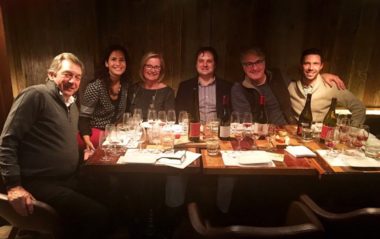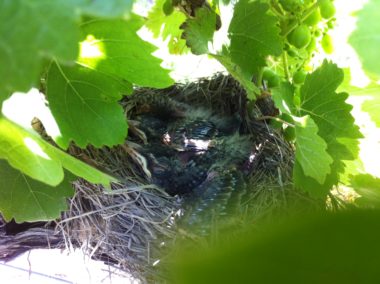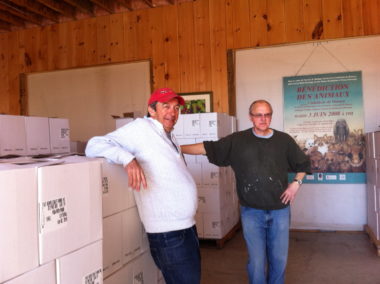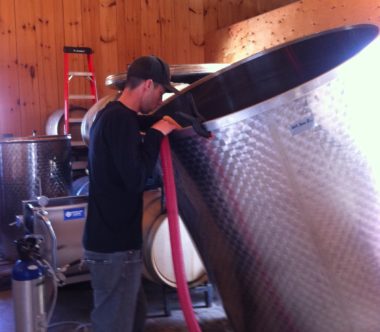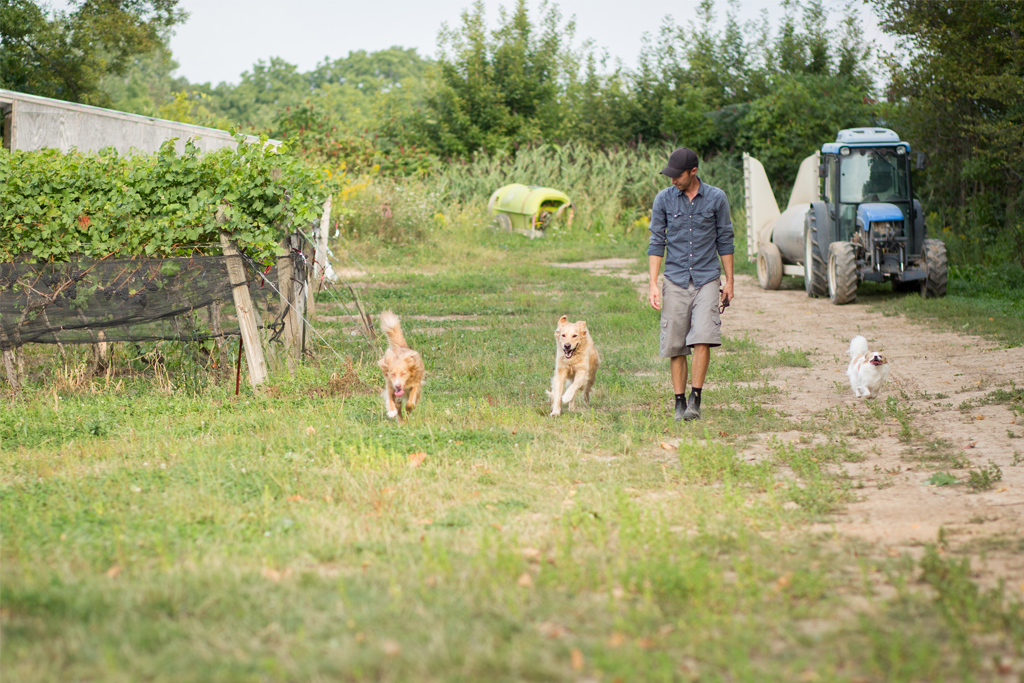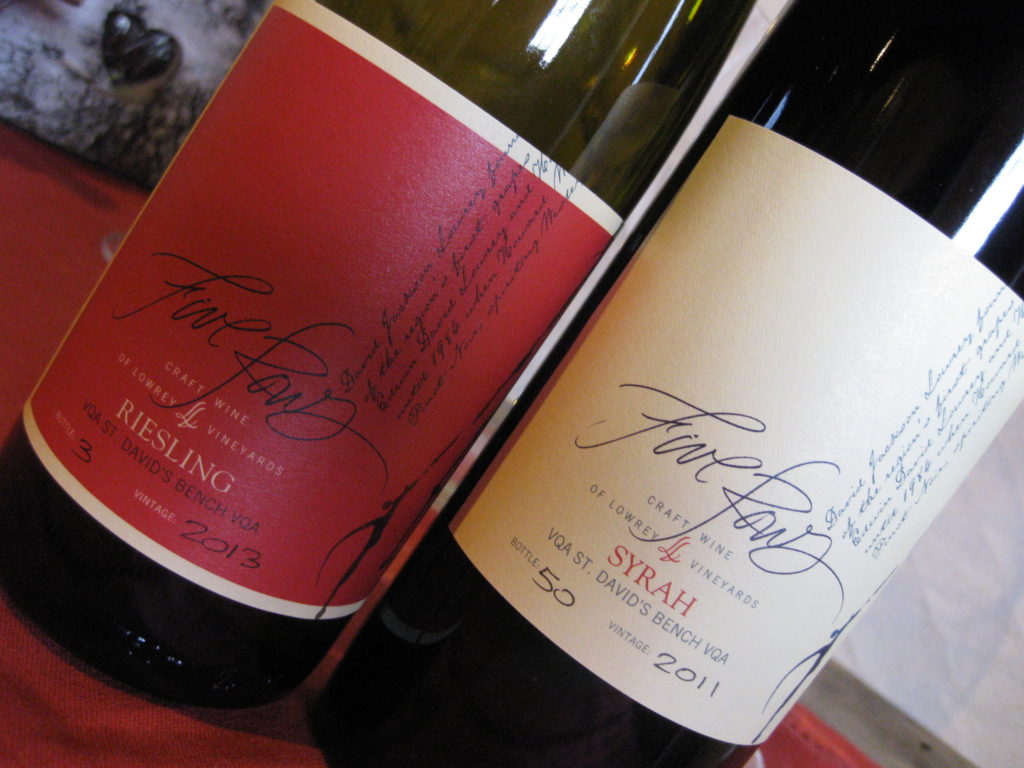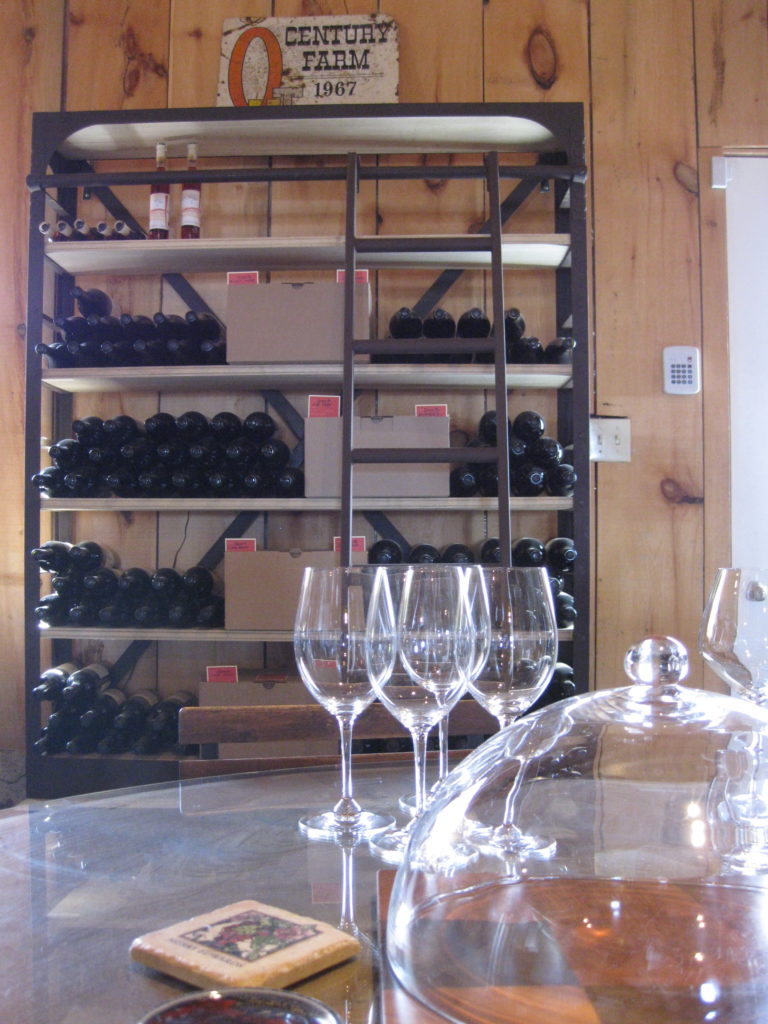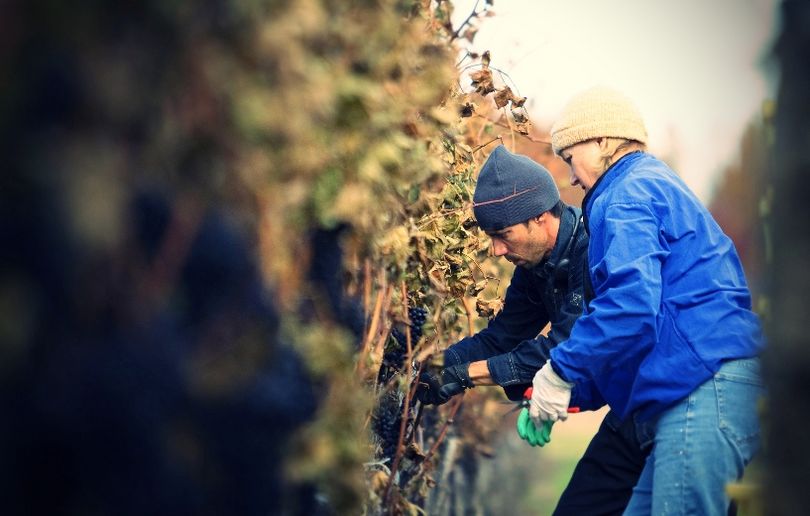2013 Pinot Noir
In looking back at my harvest notes for the 2013 Pinot Noir, I’m immediately drawn to the “Fruit Condition” section where I have written: excellent; “Some of the nicest we’ve ever picked.” – Wilma. I remember it well, and it makes me smile as much now as it did when she said it on September 18, 2013.
We hand-picked 90 boxes from rows 3, 4 & 5 and 64 boxes from rows 8 & 9. These are the rows that I traditionally use, and they represent a good cross section of terroir from our oldest vines. The Pinot was sorted four times: first I do a quick pass on my own before we harvest to remove any obvious rot; then each picker must inspect clusters as they cut them; a third inspection takes place as boxes are loaded onto the wagon and finally again as they are dumped into the crusher. Those select few Pinot berries that made the final cut ended up filling two fermenting bins.
After a four day cold soak at 18°C, the first bin containing rows 3, 4 & 5 was inoculated with RC212 yeast and the second bin (rows 8 & 9) was inoculated with W15. Fermentation lasted about a week, with peak temperature around 34°C. Wines were then inoculated with malolactic bacteria strain MBR31 and racked to barrel. After 24 months in oak (100% French, 20% new), the wine was blended and eventually bottled on April 6, 2016.
Aromas: “Like walking into a pantry”; ripe cherry, dried spices, truffle
Palate: light velvety texture; good balance; enjoyable now, but just enough tannin to make you want to lay it down for a while
Production: 145 cases
2013 Cabernet Sauvignon
A later Spring than 2012 (few are earlier) led to an interesting vintage that felt like a constant uphill battle. The growing degree days were just not adding up, so an effort was made to dramatically reduce crop level at veraison. Then we waited…and waited some more…until all the leaves had fallen and finally picked our Cab on November 15, 2013.
The fruit was quite desiccated on the vine at this stage, almost a late harvest look, and we actually ended up with close to 23 degrees Brix and reasonable acidity. The drastic thinning gamble had worked, but at the expense of tonnage. We ended up with only 117 picking boxes of Cab Sauv from five rows that would have normally yielded 150 boxes.
The fruit was processed into two bins and after a four day cold soak, Bin 1 was inoculated with FX10 and Bin 2 with F15. Finished wine was blended, inoculated with MBR31 bacteria and racked to barrel where it would spend the next two years. Two new French barrels were used (Taransaud and Billon) along with a couple of wily veterans. The 2013 Cabernet Sauvignon was bottled on April 6th, 2016. This wine will surprise many people.
Aromas: cherry, blackberry, anise, loose-leaf tea
Palate: flavours as intense as the nose; nice texture; savoury; integrated tannins make it both drinkable and cellar-worthy
Production: 100 cases
2013 Syrah
*See 2013 Cabernet Sauvignon for the challenges associated with this growing season.
As we nervously hung our Syrah into November for the first time, I wasn’t sure I’d ever be writing a description for a Five Rows 2013 Syrah – the grapes just didn’t look right. They tasted fine, the lab numbers were good, but the berries looked wrinkled and raisin-like.
A harvest date was finally settled upon, but to our astonishment we awoke that day to….frozen Syrah-sicles! An overnight frost had thrown a wrench into the plans, making for a unique harvesting and de-stemming experience. The stems were so brittle that I was concerned the berries wouldn’t properly separate from the rachis going through the de-stemmer, adding unwanted bits of stem to the must. In the end – I needn’t have fretted, as the semi-frozen berries rattled off the rachis with ease.
82 boxes were harvested from Clone 7 rows 2 & 3, along with 57 boxes from Clone 100 (“Old Block”) rows 1 & 2. The Clone 7 was inoculated with RX60 and the Old Block with F15. Both bins were pressed after a week-long fermentation. The whole batch was aged in French oak; three older barrels and one new (DAMY Rouge).
This wine was incredibly smooth from the get-go, and frankly I have no idea why. Perhaps it was the extended hang time and wilted berries, perhaps it was the frost – yet more proof that the most unique wines often result from unforeseen circumstances. It was bottled on April 6th, 2016.
Aromas: lavender, cassis, vanilla, cooked meat, thyme (“Smells like a lamb dinner” – Wilma)
Palate: smooth as silk, very savoury, hint of pepper, finish dominated by dark fruit
Production: 100 cases

